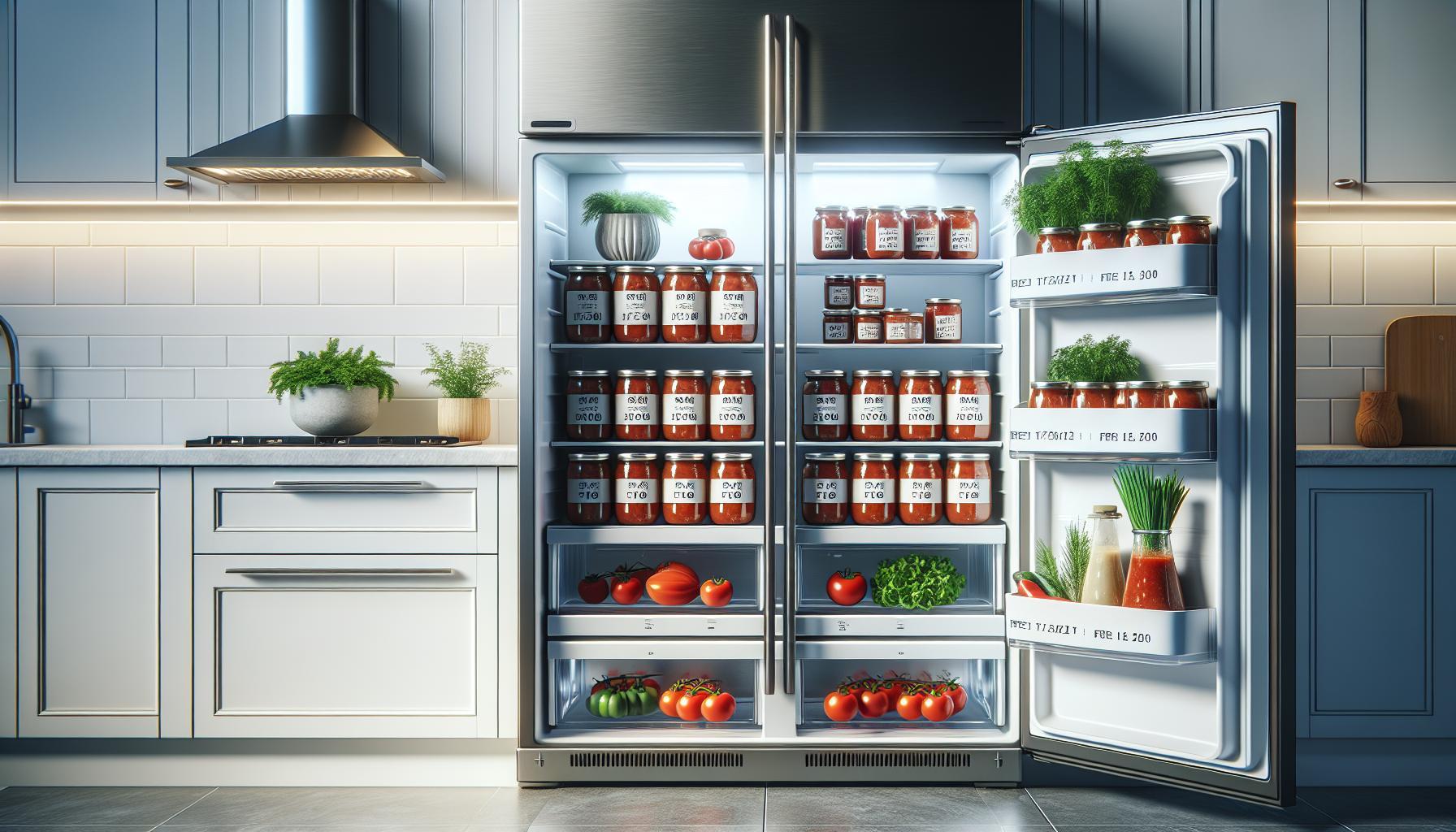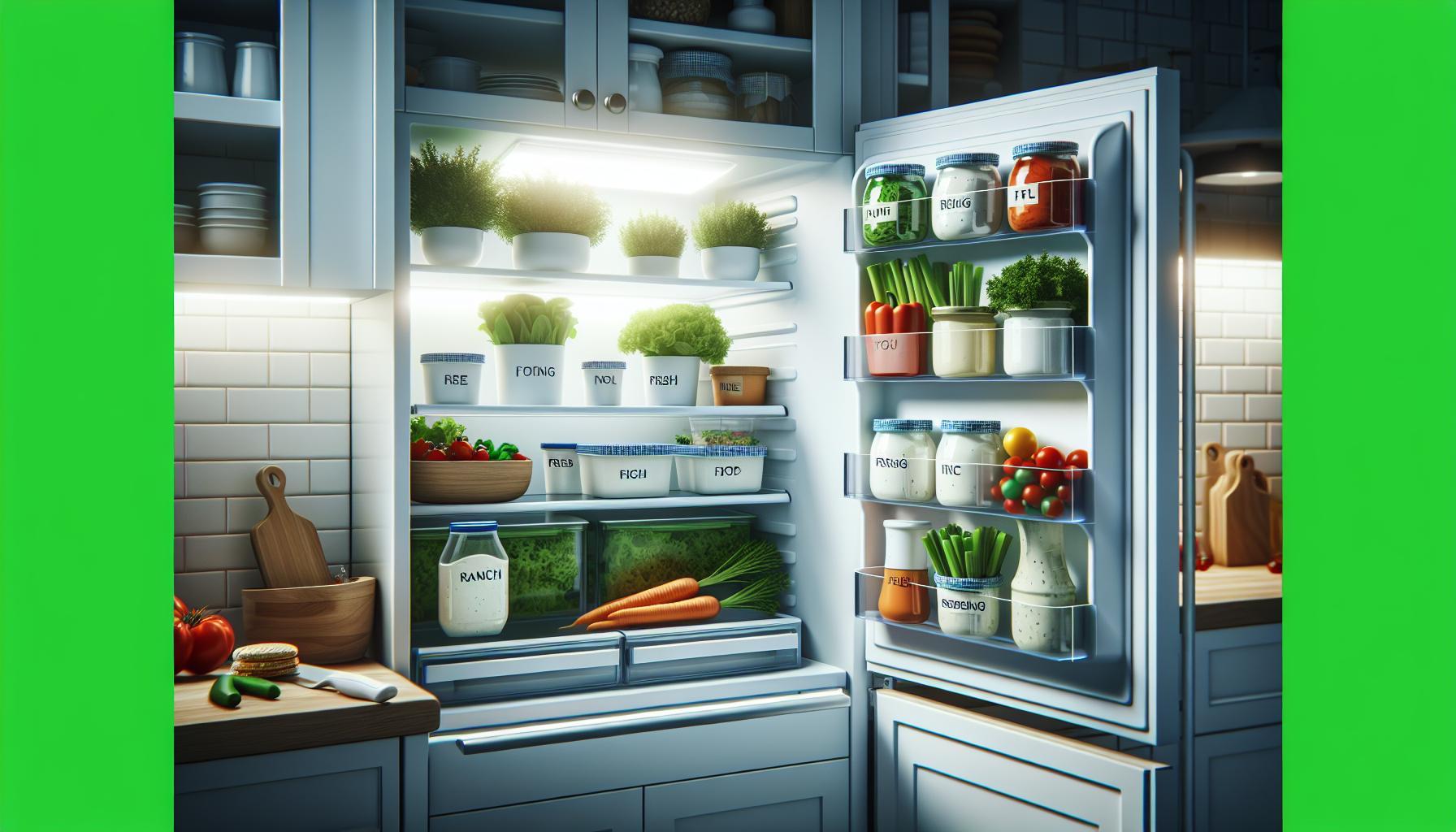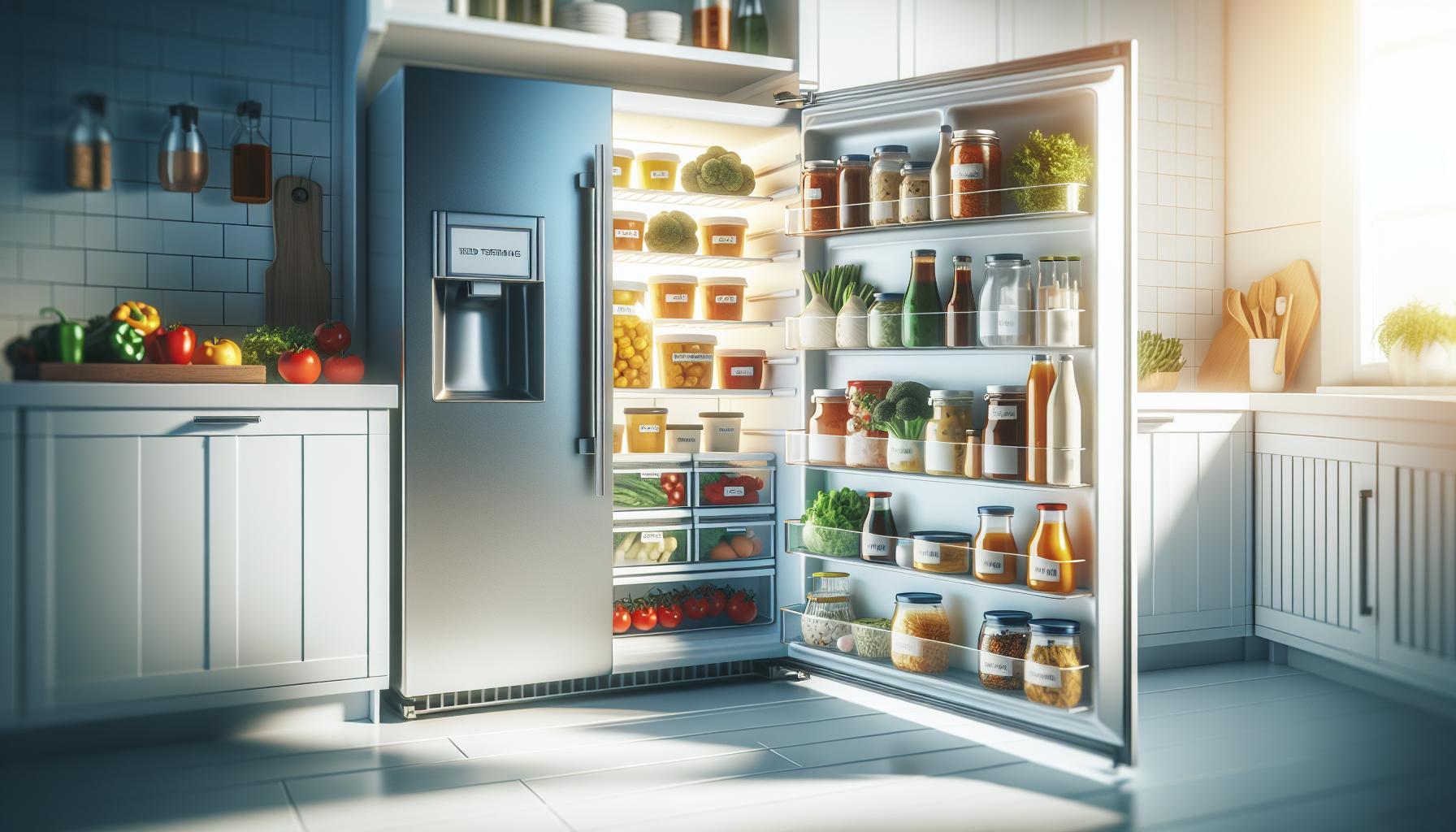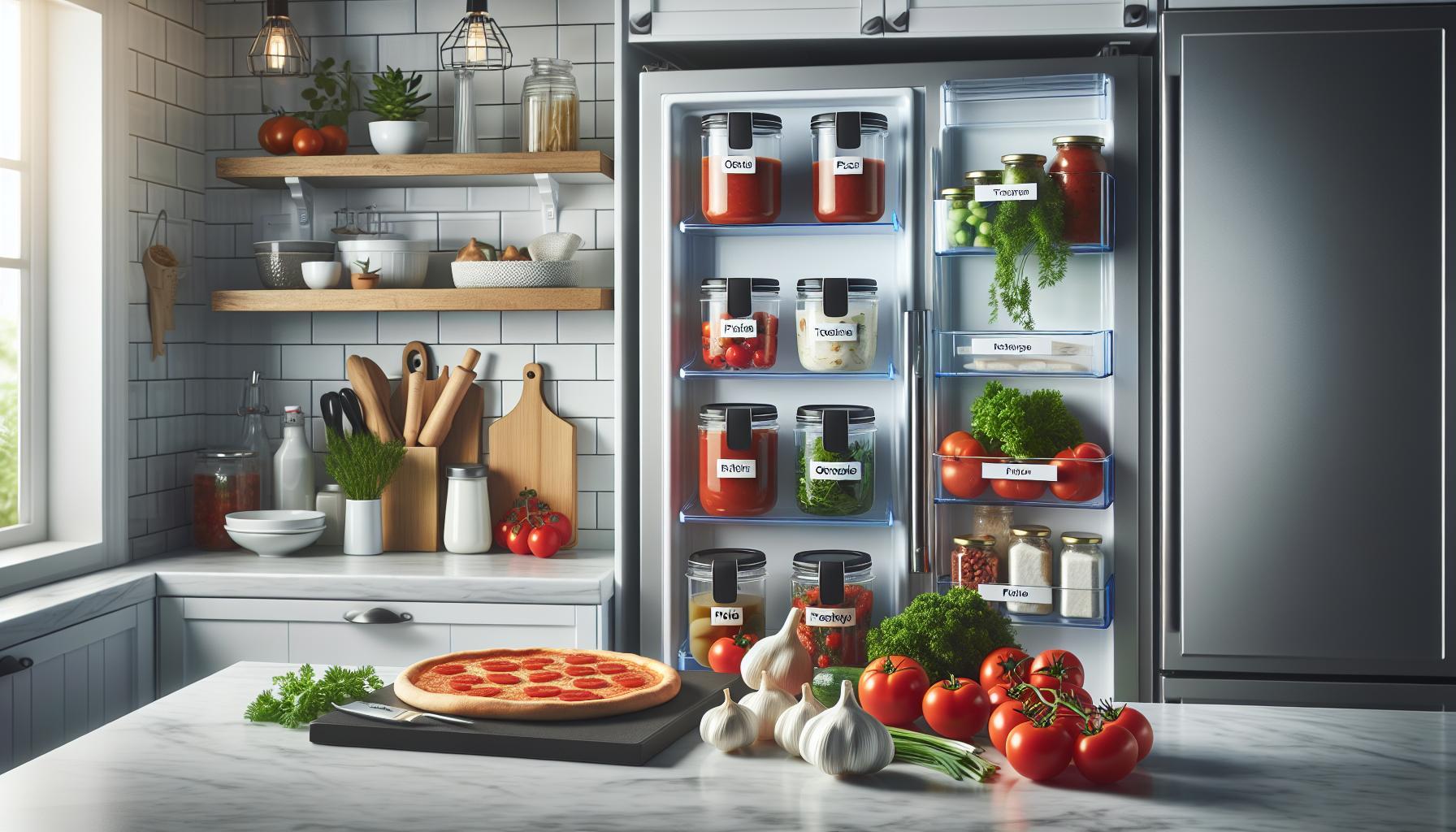Tomato sauce is a kitchen staple, cherished for its versatility in countless dishes. However, many home cooks often find themselves wondering how long this delicious condiment lasts in the fridge once opened. Understanding the shelf life of tomato sauce not only helps prevent spoilage but also ensures food safety, saving you from unexpected culinary mishaps.
Did you know that improperly stored tomato sauce can develop spoilage bacteria, leading to food waste and potential health risks? By mastering effective storage techniques and knowing the right timeframe for using your sauce, you’ll minimize waste while enjoying every last drop of flavor. In this guide, we’ll delve into essential tips for keeping your tomato sauce fresh and ready for your next meal, so you can savor its rich, tangy goodness without concern.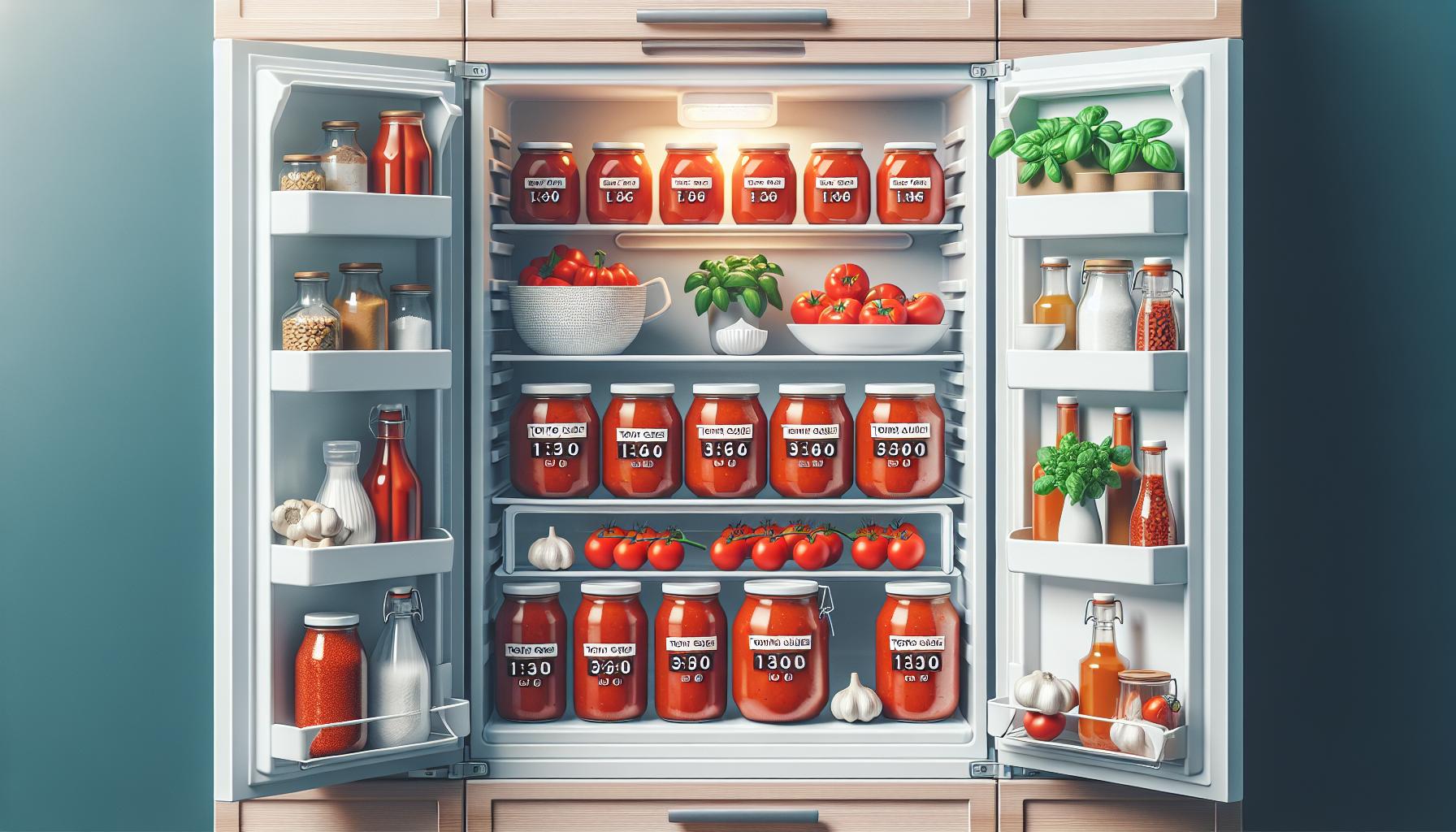
How Long Can You Keep Tomato Sauce in the Fridge?
When it comes to storing tomato sauce, understanding how long it can safely remain in the fridge is crucial for both food safety and maintaining optimal flavor. Generally, after opening, tomato sauce can be kept in the refrigerator for about 5 to 7 days. This time frame applies to both homemade and store-bought sauces. However, several factors can influence this duration, including ingredients, preservatives, and storage conditions.
To maximize the shelf life of your tomato sauce, it’s essential to store it correctly. Always transfer any leftover sauce into an airtight container if it comes in a can or jar that’s been opened. Make sure to keep refrigerated at 40°F (4°C) or below. This temperature helps inhibit the growth of bacteria that can lead to spoilage. Remember, the appearance and smell of the sauce can also provide crucial clues about its freshness. If your sauce develops an off odor, unusual color, or visible mold, it’s best to err on the side of caution and discard it.
In summary, to enjoy your tomato sauce at its best quality while ensuring food safety, stick to the 5 to 7 days rule after opening, and be attentive to how you store it. This simple practice can help you prevent waste and enjoy your sauces to the fullest!
Factors That Affect Tomato Sauce Shelf Life
Understanding the factors influencing the shelf life of tomato sauce is essential for ensuring both its safety and quality. Several variables come into play, starting with the ingredients contained in the sauce. Sauces with high acidity, like those made from fresh tomatoes, tend to have a longer shelf life compared to those with lower acidity levels. Various additional ingredients, such as sugars, fats, or fresh vegetables (like garlic or onions), can also impact spoilage rates, making sauces more susceptible to bacterial growth if not stored properly. Furthermore, homemade sauces, often lacking preservatives that are commonly found in store-bought versions, can spoil more quickly.
Another critical aspect is the storage conditions. Tomato sauce needs to be maintained at a consistent temperature, ideally at or below 40°F (4°C) to slow bacterial growth. Opening the container exposes the sauce to air, which can accelerate spoilage due to oxidation. Therefore, using an airtight container is paramount for prolonging freshness. Moreover, storing the sauce on shelves in the refrigerator door may lead to fluctuations in temperature, potentially reducing its shelf life. It’s best to place it on a middle or bottom shelf where the temperature remains more stable.
Examples of Factors Influencing Shelf Life:
- Ingredients: Homemade vs. store-bought; acidity levels; presence of preservatives.
- Storage conditions: Temperature stability; usage of airtight containers; location in the fridge.
The overall hygiene practices during cooking and handling are also crucial. Using clean utensils and avoiding cross-contamination can significantly reduce the risk of introducing bacteria, thereby extending the sauce’s usability. Additionally, if the sauce shows any signs of spoilage-such as changes in color, odor, or texture-it should be discarded promptly, regardless of the time since opening. Paying attention to these factors not only helps prevent waste but also ensures that the sauce can be enjoyed at its best quality. By being mindful of these various elements, you can maximize the freshness and safety of your tomato sauce, making your culinary experiences more enjoyable.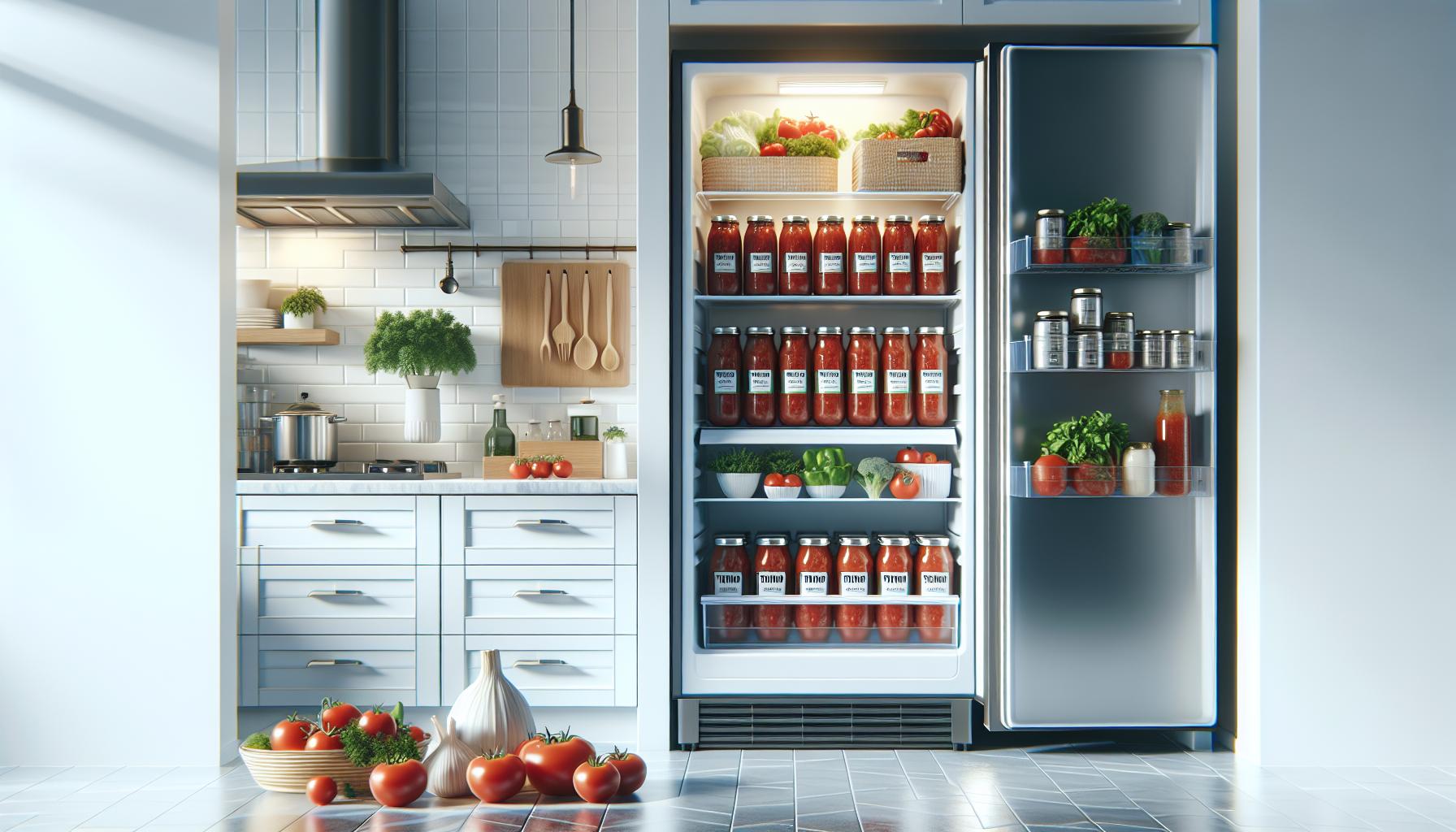
Storage Options: Best Practices for Tomato Sauce
To maximize the freshness and shelf life of tomato sauce, proper storage practices are essential. When it comes to refrigerating tomato sauce, timing and conditions play critical roles. An opened store-bought tomato sauce typically lasts about 5 to 7 days in the fridge, while homemade varieties may only stay good for about 3 to 5 days, depending on their ingredients and preservatives used. To ensure optimal preservation, it is vital to store the sauce in an airtight container, which minimizes exposure to air and helps prevent oxidation.
Best Storage Practices
- Use Airtight Containers: After opening your tomato sauce, transfer it to a clean, airtight container if it isn’t already packaged that way. Glass or plastic containers with tight-fitting lids work best. This reduces air exposure, keeping the sauce fresher for a longer time.
- Keep It Cold: Always store the sauce at a consistent temperature below 40°F (4°C). Avoid placing the sauce in the refrigerator door as this area experiences temperature fluctuations. Instead, opt for the middle or back shelves where the temperature is more stable.
- Label and Date: When storing leftovers, labeling and dating the container can be immensely helpful. Knowing when the sauce was opened or made allows you to track its freshness easily and ensures you consume it within safe timeframes.
- Physically Separate Leftovers: If storing leftover sauce that was heated, it’s best to let it cool to room temperature before refrigerating. Additionally, ensure it is stored separately from other foods to avoid cross-contamination.
By adhering to these best practices, you can effectively prolong the life of your tomato sauce while maintaining its flavor and quality. Taking these simple steps reduces the risk of spoilage and allows you to enjoy your sauces to the fullest, enhancing your culinary experiences over time.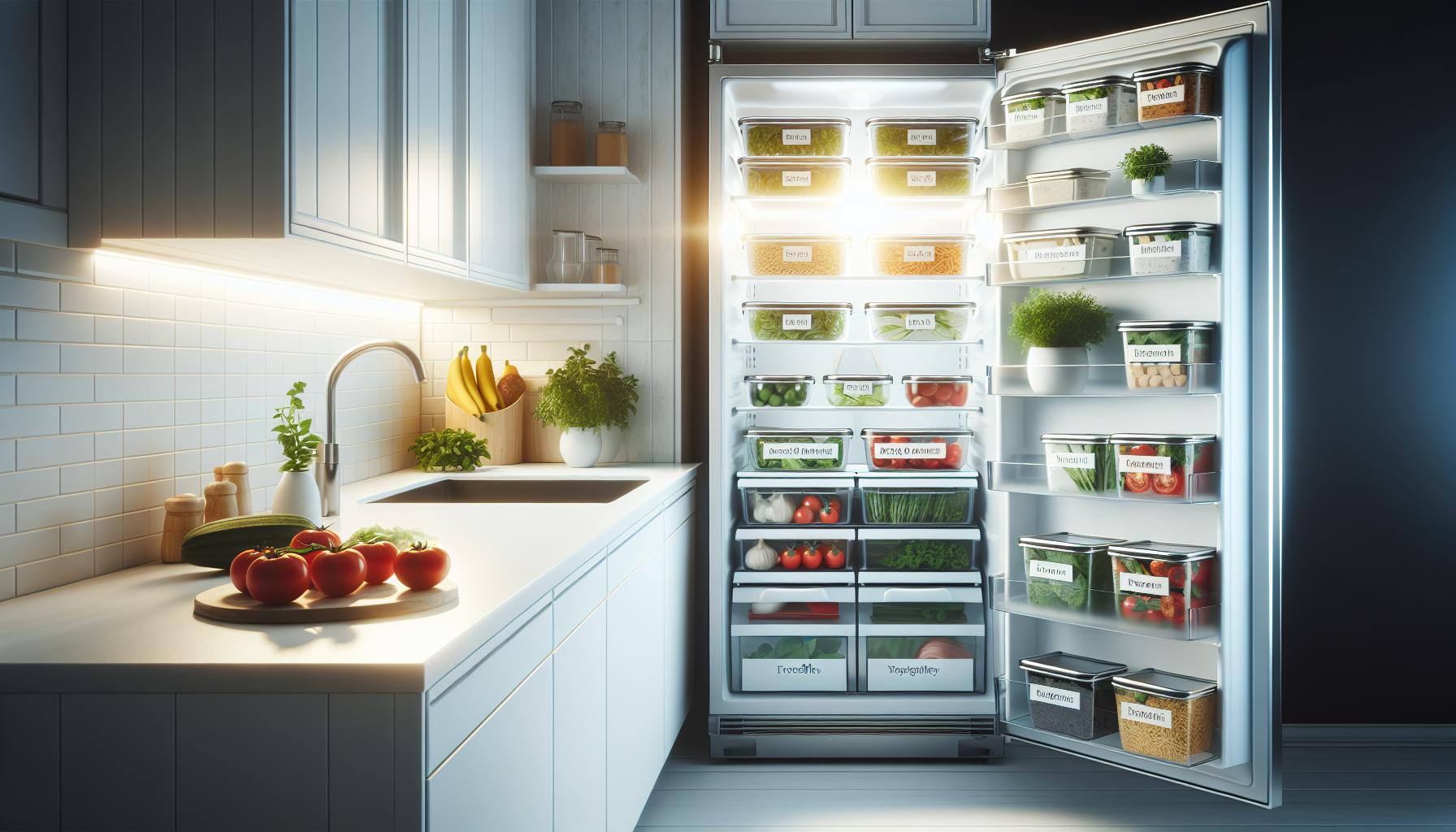
Signs of Spoilage: When to Toss Your Sauce
Recognizing the signs of spoilage in tomato sauce is crucial for ensuring your safety and the quality of your meals. Spoilage can occur even within the recommended refrigeration timeframes, and detecting it early can prevent foodborne illnesses. One of the most noticeable indicators of spoilage is the presence of mold. If you see any fuzzy patches of mold on the surface of your sauce, it’s best to discard it without hesitation. Mold can grow quickly, particularly on sauces that are homemade or lack preservatives.
Another telltale sign is an off smell. Fresh tomato sauce should have a sweet and tangy aroma, but if it emits a sour or foul odor, it’s likely spoiled. This change in smell often accompanies changes in texture; if your sauce appears overly thickened or has separated significantly, these are also red flags. A change in color can signify spoilage; if the sauce becomes darker or develops an unusual hue, it’s safest to throw it away.
Furthermore, taste testing should be approached with caution. If the sauce looks and smells okay but you are still unsure, tasting a small amount can indicate quality. However, if it tastes sour or not as expected, err on the side of caution and discard it. To keep your sauce safe and tasty, always opt for the 5 to 7-day maximum in the fridge for opened store-bought varieties, and 3 to 5 days for homemade sauces. By being attentive to these signs, you ensure that your culinary creations remain safe and enjoyable.
How to Store Opened Tomato Sauce Properly
Opened tomato sauce can be a culinary lifesaver, but proper storage is key to extending its shelf life and maintaining quality. To ensure your sauce remains fresh and safe to eat, start by transferring it to an airtight container as soon as you open it. While many commercially packed sauces come in jars or cans, these should be sealed tightly after use and transferred to another container to minimize exposure to air and prevent spoilage.
It’s essential to store the sauce in the refrigerator promptly. Ideally, opened tomato sauce should be consumed within 5 to 7 days if it’s store-bought and about 3 to 5 days for homemade varieties. Keeping your sauce toward the back of the refrigerator-where it’s coldest-can also help maintain its freshness longer. You should ensure that the temperature of your fridge is consistently set below 40°F (4°C).
When storing tomato sauce, always check the label for any specific storage instructions. Some sauces contain preservatives that may affect their longevity. Mixing your sauce with utensils should be avoided as it introduces bacteria. Instead, use a clean spoon every time you scoop sauce from its container. If you notice that the sauce has begun to separate, developed an off smell, or shows signs of mold, it’s a clear signal that it has spoiled and should be discarded.
By following these simple but effective steps, you can enjoy your opened tomato sauce with confidence, knowing that you’ve taken the necessary precautions to keep it safe and flavorful.
Do Homemade and Store-Bought Sauces Differ?
When it comes to tomato sauce, one of the most significant differences between homemade and store-bought versions lies in their composition and shelf life. Homemade sauces are typically fresh, made with natural ingredients, and free from preservatives. As a result, they tend to have a shorter shelf life, generally lasting about 3 to 5 days once opened and stored in the refrigerator. This is due to the absence of artificial preservatives, which play a critical role in keeping store-bought sauces safe for longer periods.
On the other hand, commercial tomato sauces often include preservatives and stabilizers that can extend their shelf life to about 5 to 7 days once opened. These ingredients help resist spoilage and maintain quality, but they can also impact flavor and texture. For example, some store-bought sauces may contain added sugars or artificial flavors, which can alter the taste compared to homemade recipes that rely on fresh herbs and spices. When selecting a store-bought sauce, look for options with fewer additives if you’re concerned about quality.
Storage Considerations
Both types of sauces require proper storage to maintain freshness. Homemade sauces should always be cooled down before placing them in an airtight container in the fridge to avoid condensation, which can encourage bacterial growth. Store-bought sauces benefit from keeping them sealed in the original jar or transferring them to a clean, airtight container. Regardless of the type, always place sauces in the coldest part of the refrigerator to prolong quality and safety.
Key Takeaways
- Homemade Sauce: Shorter shelf life (3-5 days), fresher taste, no preservatives.
- Store-Bought Sauce: Longer shelf life (5-7 days), may contain preservatives.
- Both should be stored in airtight containers in the coldest part of the refrigerator.
Being aware of these differences can help you make informed choices about which type of sauce to prepare or purchase, ensuring you always enjoy the freshest flavors while keeping food safety in mind.
Can Tomato Sauce Be Frozen? Tips and Techniques
Freezing is an excellent method to extend the life of your tomato sauce, allowing you to preserve that homemade flavor and conveniently have it on hand when needed. If stored correctly, frozen tomato sauce can last anywhere from 4 to 6 months in the freezer without significant loss of flavor or quality. Many people might not realize that freezing can also enhance the sauce’s taste as it allows time for the flavors to meld together.
Before freezing, it’s essential to cool the sauce to room temperature. Pour the cooled sauce into airtight containers or freezer bags, leaving some space at the top to accommodate expansion as the sauce freezes. If using bags, squeeze out as much air as possible before sealing to prevent freezer burn. Label each container or bag with the date for easy reference later.
Defrosting and Reusing Frozen Tomato Sauce
When you’re ready to use your frozen sauce, the best practice is to defrost it in the refrigerator overnight. This slow thawing method ensures a safe temperature and maintains the sauce’s quality. If you’re short on time, you can place the sealed bag in a bowl of cold water or use the microwave’s defrost setting, but be cautious not to start cooking it during this process.
To revive any flavors lost during freezing, consider adding fresh herbs or a splash of vinegar or lemon juice after reheating. This can brighten the sauce and bring back the fresh taste you desire, making it a great addition to pastas, pizzas, or casseroles.
In summary, freezing tomato sauce offers a practical solution for reducing waste and ensuring you always have a delicious base for your meals. With proper handling and storage techniques, you can enjoy your sauce long after you’ve made it, keeping your dinners both quick and flavorful.
How to Revive Leftover Tomato Sauce for Optimal Taste
Reviving leftover tomato sauce is not just about making it edible again; it’s an opportunity to enhance the flavors and make it sing like it did when freshly made. As with any culinary creation, time in the fridge can dull the vibrant taste of your sauce, but a few clever additions and techniques can rejuvenate it beautifully.
To start, consider incorporating fresh herbs. Basil, oregano, or parsley can reintroduce a burst of freshness that might have faded. A handful of chopped herbs stirred in just before serving can make a world of difference. Additionally, adding a splash of acidity, such as balsamic vinegar, red wine vinegar, or even a squeeze of lemon juice, brightens the overall flavor profile and balances the sauce’s sweetness.
Another method to revive the sauce is to introduce aromatics during reheating. Sautéing some minced garlic or onion in olive oil before adding the sauce can infuse it with a rich, savory depth. Letting the sauce simmer gently after adding these aromatics allows the flavors to meld together, creating a lush and robust taste.
Texture can also play a significant role in the enjoyment of your sauce. If it has thickened too much in the fridge, blending it with a bit of water, broth, or even a splash of cream can restore the right consistency. Heat the sauce on low, stirring frequently, to ensure every element is thoroughly combined and warmed through.
Ultimately, transforming leftover tomato sauce into something vibrant and delicious requires a few thoughtful additions and a little attention to the reheating process. With these simple tricks, you can ensure that your sauce tastes as delightful as the dish it was intended to complement.
Safe Reheating Methods for Tomato Sauce
Reheating tomato sauce properly is crucial for both flavor enhancement and food safety. When warmed correctly, your sauce can regain its vibrant taste while ensuring it’s safe to consume. The key to safe reheating lies in the method used and the temperature achieved.
Start by transferring your sauce into a saucepan if it’s not already there. To reheat it safely, aim for a gentle simmer rather than a rapid boil. This helps preserve the flavors while preventing scorching. Heat the sauce over medium-low heat, stirring occasionally. It’s essential to bring the temperature to at least 165°F (74°C) to eliminate any potential bacteria that may have developed during storage. You can use a food thermometer for accurate readings.
For those who prefer using a microwave, place the sauce in a microwave-safe container. Cover it loosely to avoid splattering and heat in short intervals, typically 30 seconds to one minute, stirring between each interval to ensure even heating. Just like with stovetop reheating, ensure the sauce reaches that safe temperature.
In cases where you have a larger portion of sauce, consider reheating it in the oven. Pour the sauce into an oven-safe dish, cover it with foil, and heat at 350°F (175°C) until warmed through. This method is particularly useful for larger batches, as it provides consistent heat. Regardless of the reheating method you choose, the goal is to serve a delicious and safe sauce that’s ready to complement your meal.
Common Misconceptions About Sauce Shelf Life
Many people believe that if a sauce looks and smells fine, it’s still good to eat, which can lead to food safety issues. It’s crucial to understand that the safety of food is not only about appearance and aroma. Bacteria and other pathogens may thrive in sauces, particularly those containing perishables like tomatoes, even if they are not immediately visible.
A common misconception is that tomato sauce can last indefinitely in the fridge once opened. In reality, opened tomato sauce typically lasts between 5 to 7 days in the refrigerator when stored properly in an airtight container. Beyond this period, even if it appears okay, the risk of bacterial growth increases significantly. It’s always better to err on the side of caution. If you’re unsure, discarding anything past this shelf life is wise.
Some consumers also believe that homemade tomato sauce has a longer shelf life than store-bought varieties. While homemade sauces do not contain preservatives, which can increase the shelf life of commercial products, they also require careful handling and storage. Homemade sauces should be consumed quickly – within a week – to ensure safety.
Another prevalent myth is that freezing tomato sauce can eliminate spoilage risks completely. While freezing can extend the shelf life, it does not kill all bacteria, especially if the sauce was already contaminated before freezing. Thus, proper storage methods, such as using freezer-safe containers and labeling with dates, are essential to avoid keeping it too long.
By understanding these misconceptions, you can better ensure the safety and quality of your tomato sauce, allowing you to enjoy your culinary creations without concern for spoilage. Always prioritize date labels and storage methods over just visual inspections for optimal food safety practices.
Preventing Tomato Sauce Spoilage: Tips and Tricks
To ensure your tomato sauce remains fresh and safe to consume for as long as possible, implementing a few straightforward strategies can significantly mitigate the risk of spoilage. One of the most effective ways to enhance the longevity of your sauce is by proper storage. Always transfer leftover sauce into a clean, airtight container and store it in the refrigerator immediately after use. This minimizes exposure to air, which can promote bacterial growth. Glass jars or BPA-free plastic containers work well for this purpose, as they seal tightly and help maintain flavor integrity.
Another essential practice is to label and date your sauces. By clearly marking when the sauce was made or opened, you can easily track its freshness. Aim to consume homemade or opened commercial tomato sauce within 5 to 7 days for optimal safety. This simple step can help prevent you from accidentally consuming a sauce that has overstayed its welcome in the fridge.
Additionally, always use clean utensils when serving sauce from the container. Introducing contaminants can accelerate spoilage, so avoiding dipping used spoons or forks back into the sauce is crucial. If you frequently find yourself with leftover sauce, consider portioning it into smaller containers. This way, you can take out just what you need, reducing the risk of temperature fluctuations and contamination for the remaining sauce.
Lastly, if you’re looking to extend your sauce’s shelf life beyond the fridge, freezing is an excellent option. Cool the sauce completely before transferring it to freezer-safe containers or bags, removing as much air as possible before sealing. Label the containers with the date and type of sauce for easy reference. Frozen tomato sauce can retain its best quality for up to 6 months, making it a practical choice for meal prep and ensuring you always have a delicious base ready for your culinary creations.
Faq
Q: How can I tell if tomato sauce has gone bad?
A: To determine if tomato sauce is spoiled, check for signs like off-smell, mold, or a change in color. If the sauce has an unusual texture or tastes sour, it’s best to discard it. For detailed signs of spoilage, refer to the section on signs of spoilage in the article.
Q: What is the best way to store tomato sauce in the fridge?
A: The ideal way to store tomato sauce in the fridge is to keep it in an airtight container. Make sure to chill it quickly after opening and consume it within 5 to 7 days for optimal freshness. For specific storage practices, see the article on how to store opened tomato sauce properly.
Q: Can I eat tomato sauce after the expiry date?
A: While you may consume tomato sauce after its expiry date if it shows no signs of spoilage, it’s essential to exercise caution. Always check for freshness and quality before use. For safety tips, refer to the article’s common misconceptions about sauce shelf life.
Q: Does homemade tomato sauce last longer than store-bought?
A: Generally, homemade tomato sauce has a shorter shelf life than store-bought due to fewer preservatives. Homemade sauce typically lasts about 3 to 5 days in the fridge, while store-bought can last 5 to 7 days after opening. For more on this topic, check the section discussing differences between homemade and store-bought sauces.
Q: What can I do to extend the shelf life of tomato sauce?
A: To extend the shelf life of tomato sauce, store it in an airtight container, keep the fridge temperature at or below 40°F (4°C), and consider freezing the sauce if you won’t use it soon. For more preservation techniques, see the article on preventing tomato sauce spoilage.
Q: Can I use tomato sauce that has been left out?
A: If tomato sauce is left out at room temperature for more than two hours, it should be discarded to prevent foodborne illness. For guidance on proper storage timeframes, refer to the article on how long tomato sauce lasts in the fridge.
Q: Is it safe to freeze tomato sauce to extend its life?
A: Yes, freezing tomato sauce is safe and can significantly extend its shelf life. It can be kept in the freezer for up to 6 months. Ensure to cool it before transferring to a freezer-safe container. For tips on freezing techniques, check the article section on freezing tomato sauce.
Q: What is the impact of adding ingredients on tomato sauce’s shelf life?
A: Adding ingredients like cream or cheese can reduce the shelf life of tomato sauce, making it spoil faster than plain tomato sauce. To learn more about how different ingredients affect shelf life, see the relevant section in the article.
The Conclusion
Now that you know how long tomato sauce lasts in the fridge and the best practices to prevent spoilage, it’s essential to take action! Check your refrigerator now to ensure your sauce is stored safely, and don’t hesitate to use it within the recommended time frame for optimal flavor and safety. For more insights, explore our articles on “How to Properly Store Pasta Sauce” and “Signs Your Food Has Gone Bad.”
If you found this information helpful, consider subscribing to our newsletter for more tips on food safety and preservation. Have questions or tips of your own? Share them in the comments below! Your kitchen adventures don’t have to end here-dive into our resources to keep your food fresh and delicious. Remember, food safety is crucial, and with these guidelines, you’re empowered to enjoy your meals with confidence!

